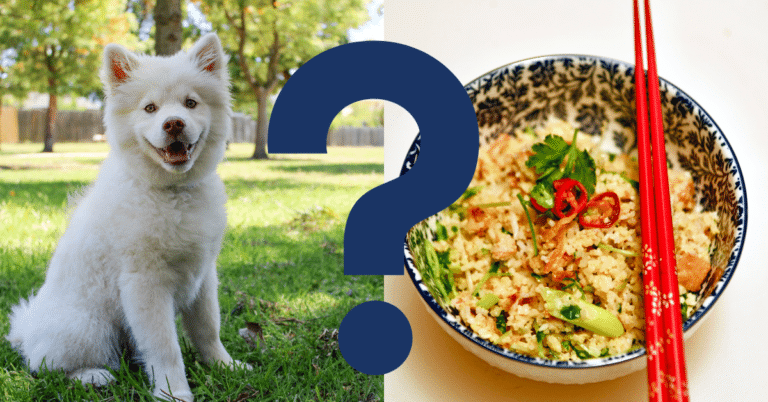Can Dogs Eat Cilantro? A Vet’s Opinion

Cilantro can help digest food, but can you feed Cilantro to your dog?
Yes, in moderation, dogs can eat Cilantro. Cilantro can be an excellent source of vitamins and antioxidants and is not hazardous to dogs.
Benefits Of Cilantro For Dogs
The potential advantages of Cilantro for dogs are further explained as follows:
Containing antioxidants: Quercetin, kaempferol, and beta-carotene are among the antioxidants found in Cilantro. These substances can aid in defending the cells of your dog against oxidative stress brought on by free radicals, which can harm DNA, proteins, and lipids. Additionally, antioxidants can strengthen your dog’s immune system and lower the risk of chronic illnesses.
- Cilantro has been found to have anti-inflammatory qualities, which may aid dogs with illnesses including arthritis, inflammatory bowel disease (IBD), or skin allergies by reducing inflammation. Although inflammation is a normal reaction to injury or infection, it can persist over time and cause chronic diseases and tissue damage. Cilantro contains a lot of linalool, a natural substance shown in animal tests to lessen inflammation, which may be the cause of its anti-inflammatory benefits.
- Vitamins A, C, and K may be found in Cilantro, which benefits your dog’s immune system, vision, skin health, and blood coagulation. While vitamin C is a potent antioxidant that helps strengthen the immune system, vitamin A is crucial for maintaining healthy skin and mucous membranes. The health of your bones and blood clotting both depend on vitamin K. Calcium and potassium, two minerals that are essential for healthy muscles and nerves, are also found in Cilantro.
- Can help with breath freshening: Cilantro contains chlorophyll, a natural ingredient that can help dogs with bad breath. Adding a small amount of fresh Cilantro to your dog’s food or giving them a chew toy infused with Cilantro can help freshen their breath naturally. Chlorophyll can help deodorize the mouth and reduce the odour caused by bacteria that produce volatile sulfur compounds (VSCs) responsible for bad breath.
- It could aid digestion Fiber in Cilantro can help your dog’s digestive tract function typically and encourage regular bowel movements. Additionally, fibre can aid in lowering the risk of diarrhoea, constipation, and other gastrointestinal issues. Additionally, canines may benefit from Cilantro in a way that is similar to how humans have historically used it as a natural treatment for nausea and indigestion. To prevent stomach distress, it’s crucial to introduce Cilantro gradually and in modest doses.
Overall, if fed sparingly and as part of a balanced diet, Cilantro can be a wholesome and delicious addition to your dog’s diet. Nevertheless, some canines may be sensitive to Cilantro or may not tolerate it well, so it’s essential to watch for any symptoms of unfavourable reactions like nausea, diarrhoea, or rashes. It is essential to visit a veterinarian if you have any worries regarding the food or health of your dog.

How To Safely Give Cilantro To Dogs?
Here are some guidelines for feeding your dog cilantro safely:
- If your dog has never eaten Cilantro before, introduce it gradually. Start by feeding them a small quantity, and look for adverse reactions like vomiting, diarrhoea, or itching. You can progressively increase the amount of Cilantro over time if your dog tolerates it well.
- Before giving Cilantro to your dog, thoroughly wash it to get rid of any dirt, pesticides, or other contaminants. You can rinse it under running water or briefly soak it in a water basin.
- Slice it thin: To simplify the Cilantro for your dog to consume and digest, chop it into small pieces. You can offer it to them as a treat or incorporate it into their meal.
- Use it to add flavour: Cilantro is a terrific way to spice up and diversify your dog’s food. It can be combined with other canine-friendly herbs like parsley or basil to create a homemade seasoning for dog food.
- A balanced diet should contain Cilantro, which should only be provided in moderation as it can have certain health benefits for dogs. Keeping cilantro consumption to no more than a few leaves or a small sprig daily is vital, as too much can upset your stomach.
- Consult a veterinarian: It is essential to seek advice from a veterinarian if you have any questions about whether you should feed your dog or if your dog has any health issues that Cilantro may exacerbate. They may offer individualized guidance on safely and successfully adding Cilantro to your dog’s diet.
Will Cilantro Make A Dog Sick?
While eating Cilantro in moderation is generally safe for dogs, some canines may react negatively to the herb or develop allergic reactions. Dogs who consume too much Cilantro may have nausea, vomiting, diarrhoea, gastrointestinal pain, and appetite loss.
It’s vital to introduce Cilantro gradually and in modest amounts to your dog if they’ve never tried it to gauge their reaction. You should stop giving Cilantro to your dog and get advice from your veterinarian if they exhibit any unfavourable symptoms after eating it, such as vomiting or diarrhoea.
Rarely, dogs may be allergic to Cilantro, resulting in more severe symptoms like hives, facial swelling, and breathing difficulties. Immediately seek veterinary attention if you think your dog is reacting to cilantro allergy.
Overall, feeding your dog Cilantro occasionally as part of a balanced diet can benefit their health. It is best to speak with a veterinarian for specific guidance if you have any reservations about giving Cilantro to your dog or if your dog has any underlying medical issues.

Vet’s Summary
Natural elements in Cilantro can enhance dogs’ health in several ways. These consist of anti-inflammatory and antioxidant qualities that can aid in preventing cellular deterioration and advancing general health. Additionally, Cilantro has been demonstrated to offer digestive benefits for both people and animals. Natural prebiotics found in Cilantro can maintain a healthy digestive system and aid in feeding your dog good bacteria. Additionally, Cilantro’s prebiotic fibre can aid in regulating bowel motions and preventing constipation.
In moderation, feeding Cilantro to dogs can be a secure and healthy way to enhance their general well-being. It’s crucial to introduce it gradually and watch for any indicators of unfavourable reactions. Cilantro sensitivity in some dogs may result in gastrointestinal distress, including vomiting and diarrhoea. You should stop feeding Cilantro to your dog and ask your veterinarian for advice if they exhibit any adverse symptoms after eating it. Live microorganisms known as probiotics have been shown to improve immune system function and assist in maintaining a healthy balance of gut bacteria. While Cilantro naturally contains prebiotics, adding probiotics to your dog’s diet can also benefit their digestive health. Probiotics can improve nutrient absorption and digestion, reduce inflammation, and inhibit the formation of dangerous bacteria in the stomach.
Probiotics are present in some dog meals and supplements, and your veterinarian can advise you on the best probiotic choices for your dog. It’s crucial to pick a probiotic supplement of the highest calibre, including canine-beneficial bacterial strains. Your veterinarian can assist you in selecting the proper dosage and supplement for your dog, depending on their specific requirements. A holistic strategy for promoting your dog’s digestive health can include feeding Cilantro and supplementing with probiotics. Before making any dietary or supplement modifications for your dog, consult your veterinarian. Based on your dog’s particular health requirements, your vet can guide you on the best diet and supplement options.
Videos To Watch
If you’re interested in watching if your dogs can eat Cilantro, you can watch this video!
Here is a video you can go through to help you understand if your dog can consume Cilantro or not:






